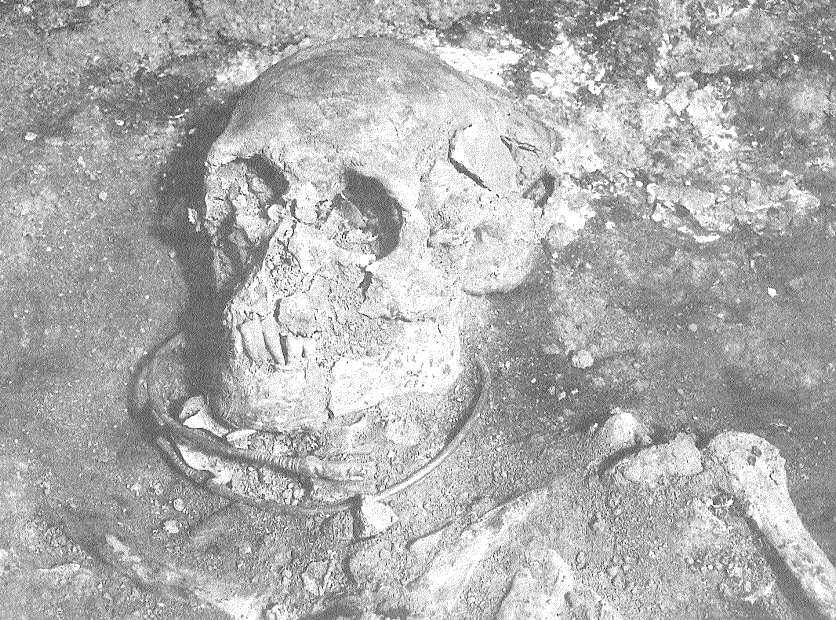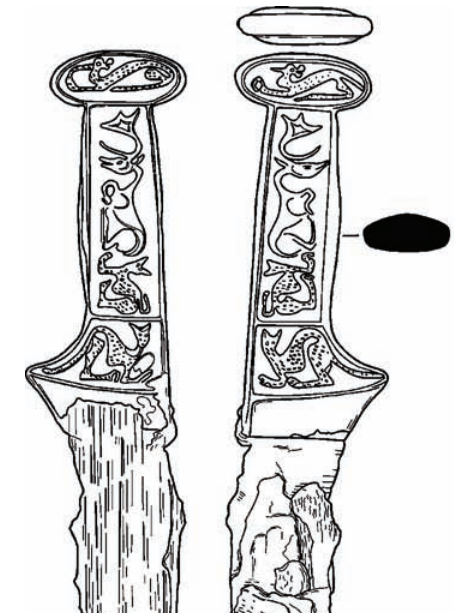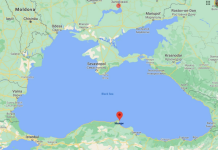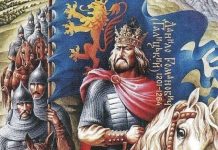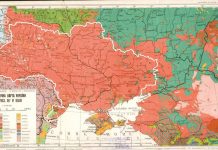Chochorowski, Skoryj in the Bolshoi Ryzhanovsky Kurgan book: “Beginning from the entrance, the burial chamber was divided for most of its length by a partition carved out in bedrock clay. In our opinion, the partition imitates a stove of a kind, comprising a sub-rectangular «hearth» part with a flat top and a niche in a longer side, and a relatively wide «chimney» resembling a truncated cone. The «stove»-partition divided the chamber into two parts: a «household» part, where the majority of various objects were found, and a «living» part, where the proper burial of a high-ranking individual was situated. The deceased (male, 45-50 years old) was buried by the north-western, longer wall of the chamber, on a large wooden platform 3.5 m long and maximum 2.0 m wide, on a relatively thick bed of grass and with the head on a cushion… The body was lying in a supine position with the head to the northwest. The part of the platform where the body lay was separated by a kind of a curtain of a pink-violet color (judging from impressions surviving on clay lumps), attached to the ceiling by two iron hooks. The deceased was wearing a solid gold torque on his neck, a symbol of power and an indicator of high social status.
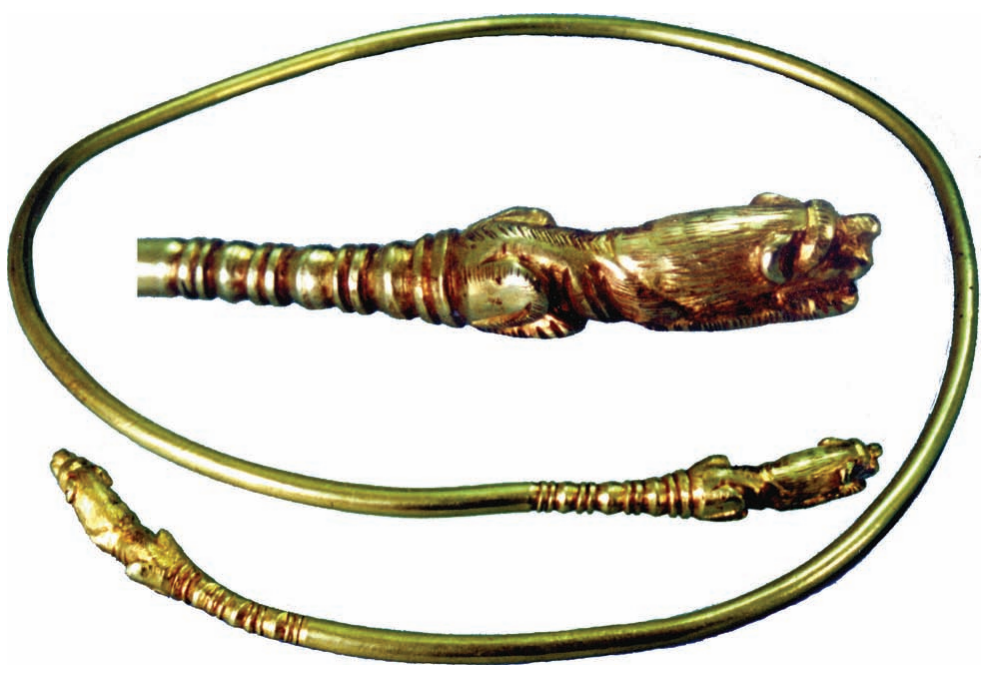
With his left hand, he held the lower part of a scabbard of a short sword with a gold-covered hilt. A large leather gorytos (a bow-and-quiver case) lay immediately next to the sword, detectable as a dark, decayed outline with fragments of wood and leather, within which were arrows (94 pcs), and an iron knife and awl. Next to the gorytos, parallel to it and partly covering its lower part, were the remains of a wooden bow. To the right of the deceased, at the height of the elbow joint, a bronze object in the shape of a fork was found. Four bear claws were found on the grass bed near the body: at the legs, and to the right of the head. The remaining weapons were deposited along with the deceased on the platform. These included the remain of second leather quiver, to the left of the head, with a set of arrows (84 pcs) and an iron knife. An iron hook was found nearby, on which the quiver was originally suspended…
In the lower part of the platform, a bundle comprising a spear and 5 javelins was uncovered, which originally must have lain horizontally on two large iron hooks fixed into the wall. Near the legs, between the wall and the spear and javelins, a third leather quiver with arrows (86 pcs) and an iron knife was recorded. The quiver also was originally suspended on the wall, on an iron hook.”
Ethnic attribution
The comprehensive analysis of the burial rite in both tombs of GRK, as well as the construction of the mound and organisation of the sepulchral space convincingly indicate that most of the elements find analogies among Scythian sepulchral complexes of the North Pontic
steppes…
The anthropological examination of the bones belonging to the primary deceased and the guard from the central tomb, and their comparison with anthropological materials from the North Pontic steppes (more than 700 skeletons from that region have been examined to
date) also argues for the steppe origin of the deceased individuals.”
According to scholars, the Scythian warlord was stout, strong and was 1m 80 cm tall during his lifetime which was way above average for that era. It also appears that the skull of the warlord looked similar to the skulls of the “royal group” from the Alexandropol Kurgan – short, wide and heavy.
